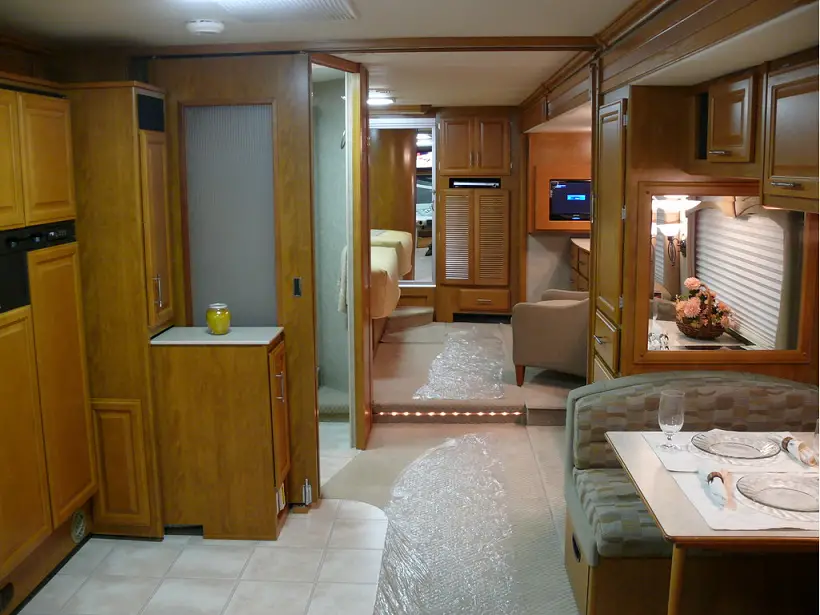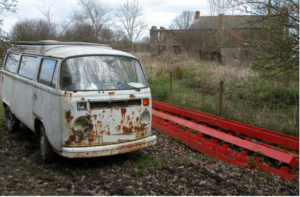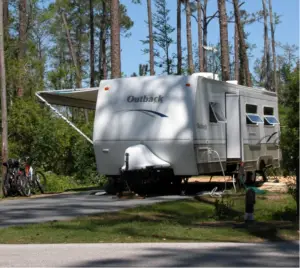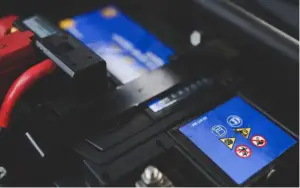No matter how much you take care of your beloved RV, it can have problems eventually.
One problem that most RV owners encounter is soft spots on the flooring.
These spots can be sunken floor areas or floors that drop slightly when you walk over them.
Soft pots on RV floor are signs that the floor has some water damage. The plywood underneath could have soaked in water for some time, and you failed to notice it.
Usually, the culprit is a leak from pipes, vents, or ducts. There may also be some leaks coming from the sink, under windows, or another water source.
Moisture can also do significant damage not just to your floor but to other parts of your RV as well.
What is more alarming with such soft spots is that they may not compromise a small portion of the floor but a larger area when leaks are unchecked.
Lets check out what to do with such soft spots, repairs and costs.
What Is The Risk Of Leaving A Soft Spot On The RV Floor As It Is?
- It can eventually compromise the rest of the flooring.
- The cost of repair may balloon instead of just spending a bit with immediate repairs.
- It is an accident waiting to happen, particularly, if the floor is already long compromised and someone may step on the already damaged flooring.
How to detect soft spots on your rv floor?
If you are buying a used RV, it is necessary to inspect it thoroughly. Not just because it looks great and everything is in place, you will forego inspecting the RV, mainly the floor.
- One thing you can do is to walk around and notice any changes to the floor when you walk on it. Does it slightly give in, or does the floor feel mushy?
- Next is by checking underneath, and you may need to poke it with a screwdriver or push on the wood. Rotten wood will have a softer surface. You can also see the appearance of a darker floor as compared to the other section.
When you own an camper or motorhome for a few years, it is ideal to check it regularly. Usually, you have to do this after camping season, when putting your RV for storage, or keep a regular inspection for any changes as this will lessen your worries.
Fixing Soft pots on RV floor
Check the extent of the damage. If it is just minor damage and only minimal moisture observed, the floor is still firm and durable to the touch, it may not need much fixing. It may just be from a recently dripping sink or a pipe, so you will need to fix the pipe, and diagnose it further.
Major damage to the flooring is another story cause you will need to cut out the damaged piece of subflooring and have it replaced.
- Inspect the extent of the damage and where you need to start the repair. Identify where the leak is coming from and repair it first. There is no use replacing the floor if you are going to leave the leaking to continue.
- Before removing any damaged floor, you must inspect where you will screw the new floor. When you remove the damaged flooring, you will see the floor joists or metal rails.
- Remove the old and rotting wood thoroughly with the right equipment, a circular saw can do the job. Clean up any chunks of wood that may still be in place. You may use a vacuum to clean the surrounding area.
- Once you clear the sub-floor, you can measure the depth so you can have a matching flooring size to replace it with. Replace any insulation if it is also damaged and if water had gotten in. Otherwise, you can leave it as is.
- It is now time to fasten and glue the new piece of subfloor using a drill and screw it in place. Make sure that there are no protruding parts and it is securely in place.
- Seal the seam so there will be no space in between the new and old subfloor. It will also give you a clean, finished floor appearance.
Cost of Repair
You will need to shell out anywhere from a measly ten dollars to a few hundred to replace your rotten flooring. First seal the pipe, window, vents that may be leaking.
You will not spend much when you DIY. Sometimes you may need to replace a small portion of the floor, so that would leave you spending less. It will depend on the square footage, and what floor you will use as a replacement.
Hiring a professional can give you peace of mind, that is if you are willing to pay for such. It may cost you a few thousand dollars to have everything fix, and again, it will depend on the extent of the damage.
There are repair companies who can give you a free quote if you are more at ease having the repairs made by a professional and if you don’t have the know-how to deal with such repairs.
Preventing soft spots
You may avoid leakage and moisture with due diligence. Water damage is a big problem if it has gone unnoticed, and a minor problem can be tremendous in a matter of weeks and months.
This is doubly true if you often use your RV for a family vacation or leave your RV parked outside where it is exposed to outside weather.
By being a responsible RV owner, you can avoid huge repair expenses, and you can even enjoy your RV for years.
So how can you prevent water damage and having major floor issues? Here are some suggestions to remember.
Check the linked article that I write few weeks ago on the best way to dry your camper floor.
Before you purchase a used RV
Not just because you purchased a brand new RV, it is a guarantee that nothing is lurking underneath the flooring. This may not be a usual occurrence, but there is no harm in warranting no factory defects.
Keep in mind that when you buy a used RV, you are also buying any dilemmas that go with it.
You should inspect the vehicle thoroughly. Here, there are more chances of the soft spot on the floor, and you will have to be aware of it.
If you can buy an RV at such a bargain price, you must also know what you are agreeing to. You may purchase an RV with a soft spot on the flooring but remember you will have to shell out more with repairs.
Buying a relatively newer used RV is the best option, so the repair costs – if any, will be minimal. It may cost you more as you purchase the fresher RV, but it can save you a lot of money with fewer repair costs.
Frequent Inspection
It is not just the obvious you need to check cause some cracks may be visible, but some issues may hide in plain sight.
Check the seals and gaps of the window, roof and see if there are any holes or spots. Something that looks harmless may be the start of something problematical, eventually.
You may also require doing some tapping and pressing on the floor to examine some differing sounds. If there is water damage, it will have a distinct sound.
- Walk slowly on the RV floor and see if there are changes, whilst walking in each section.
- Inspect the pipes, vents, and other water sources to make sure that nothing is leaking.
If you need to take a peek underneath the carpets, do so. It can help you catch the problem before it even starts.
Identifying water damage can be tricky, check this guide that will help you identify if there is water damage in your RV.
Don’t get complacent
Checking and rechecking your rig is not being paranoid, but you are making sure it will not surprise you to find that anything is degraded.
This is important after a vacation or a camping trip. Also, if you are living in your RV, or if you are parking it somewhere. You can check on it once in a while, even a weekly inspection is ideal.
Know it yourself
Since your RV will be the source of your family’s comfort during vacation and out-of-town holidays, it is crucial that you have some knowledge about minor repairs and learning about your RV. What is it made of, what materials, and how do some minor replacements? Also, keep some tools and sealants handy, so if you need quick, minor repairs, you are set. It will also ensure that some minor damage will not be neglected but repaired at the soonest time.
Inspect while in storage
Since you are not in it full time, you may not be aware of any water damage that is starting.
You may inspect at least once a week or every two weeks and monitor the hoses and tanks, plus windows and roofs.
Choose Ideal camping site
Do not expose your RV where it can face the brunt of the rain or snow. If there is a better cover, take it. You may have your RV ready for anything, but there is no harm in avoiding any issues such as a leaky ceiling or pouring roof. Just keep your RV safe.
Other RV Floor Issues
RV floors can last for years, even extending up to twenty years or longer, but because of each owner’s usage, maintenance, and moisture it is exposed to, it now varies. It is easy to replace the flooring, but you have to be ready for the expenses and the time you have to wait for it to get repaired.
The cost of repair or replacement varies where a three hundred square foot flooring can cost you at least three to four hundred dollars to replace it yourself, but having it done by a professional can reach up to seven hundred dollars to a thousand.
Signs of cupping in hardwood floor
Your RV’s humidity could be excessive. There is an available humidifier that can be useful for such instances.
It can also mean that there is water underneath and requires hardwood drying to eliminate the moisture.
Squeaky floorboard
This is annoying if you have a few people with you inside the RV. You need to have the nails connecting the joists checked and make sure that joints are not loose. The nails may move in or out of the joists and are causing the awful sound. Nails may need tightening or even replaced with newer ones.
Smell of mold and mildew
It is a sign of water damage and may not just involve your floor. It may also extend to the walls.
If you have a carpeted floor, the issue may be hiding underneath. If there is no soft spot on your floor, but there is a musty smell, this is also a sign of moisture somewhere in your RV.
Some tips on RV floor care
- Over-cleaning is another mistake that RV owners are guilty of. It can do more damage to their RV since some of them use the wrong materials to clean their flooring, damaging the floors in the long run. Sometimes using cleaning materials that soak on the floor underneath can also cause some harm.
- Using cleaners to dry the floor fast is ideal as well as using a humidifier to remove moisture in the RV’s interior will be helpful.
- Spills need immediate cleaning as they will soak the carpet and will cause floor dampness. Using a paper towel to blot the liquid should work in keeping it from penetrating underneath.
- Avoid wetting the carpet or the RV flooring, and be careful not to wet the edges of the rugs. Some RV owners prefer to remove the carpets cause it takes much effort to clean and maintain.
- When people go in and out of the RV, make sure you have a doormat outside to wipe their feet and remove dirt before entering the RV. It will avoid them from bringing any dirt and dust inside that will stick to the flooring- and carpet if you have it. It will also help in minimizing your cleaning routine.





